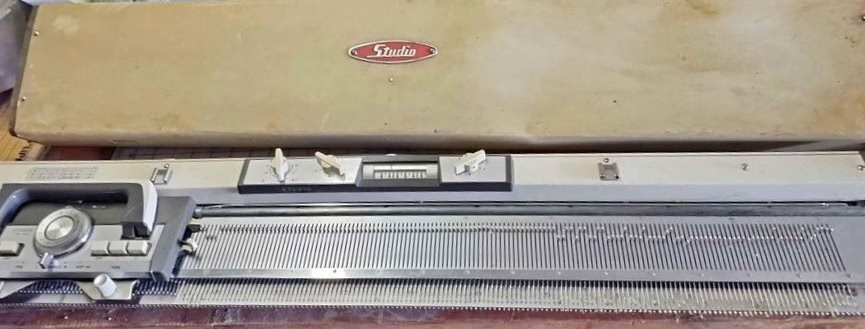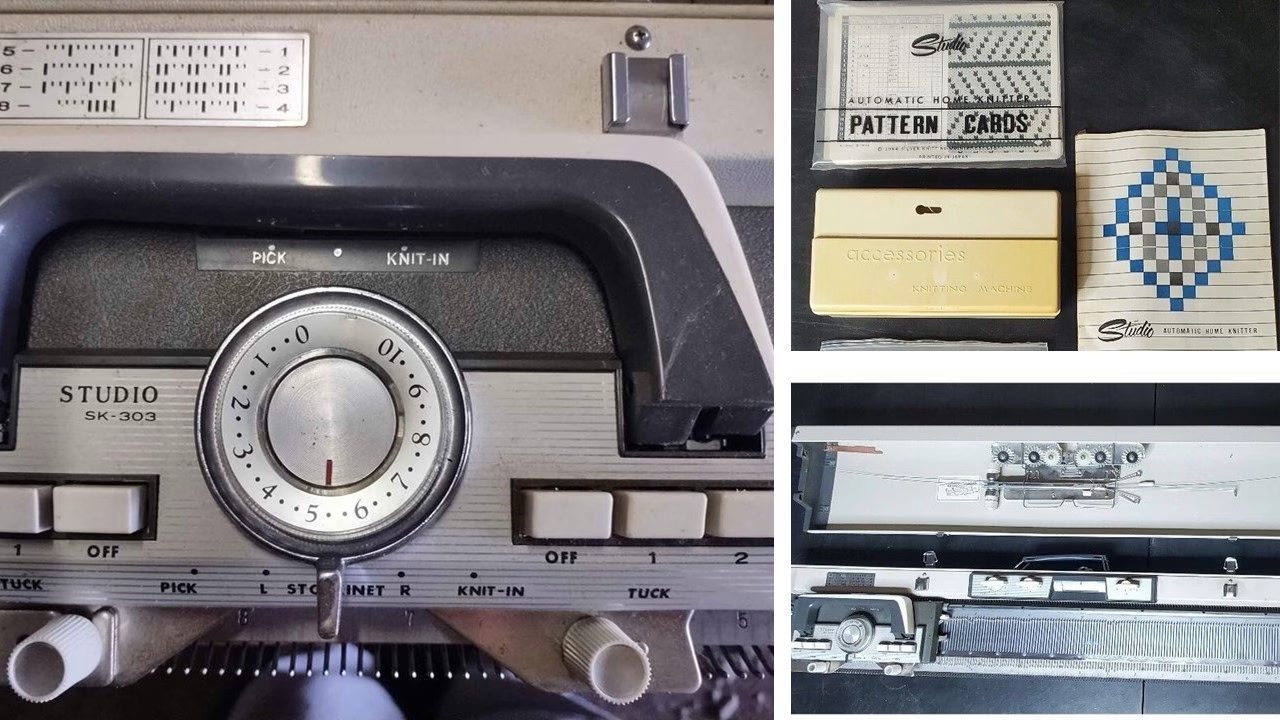Studio SK303 knitting machine was released onto the market in 1967. It is a standard-gauge knitting machine with 200 needles, 4.5 mm apart, and a turn-knob-controlled needle selection mechanism to knit patterns. It takes some learning to operate all these knobs but it is very easy once you get a hand of it and in fact, I found it a lots less tedious (see the video and read the blog about my tests) than manipulating needles with the ratchet on the Brother push-button machines.
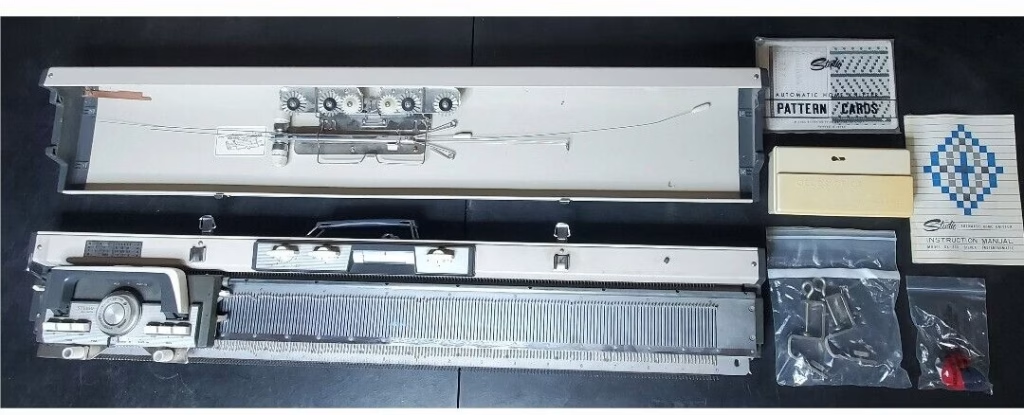
But the ease of needle selection allows for various stitch manipulations. For example, I easily invented the lacy pattern below without too much effort (again, watch the video and the pattern description is coming soon).

While turn buttons control which needles get selected, the push buttons on the carriage together with the slide lever (on the back of the carriage with “pick” and “knit” indicators) and russel levers (on the side of the carraige) allow knitters to easily knot various patterns.
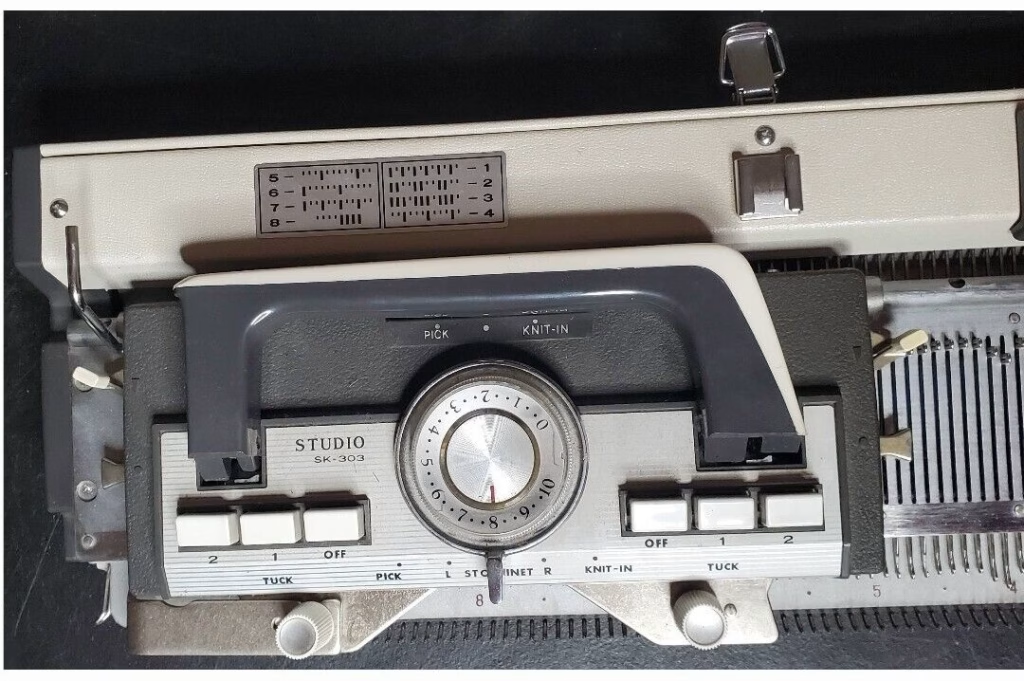
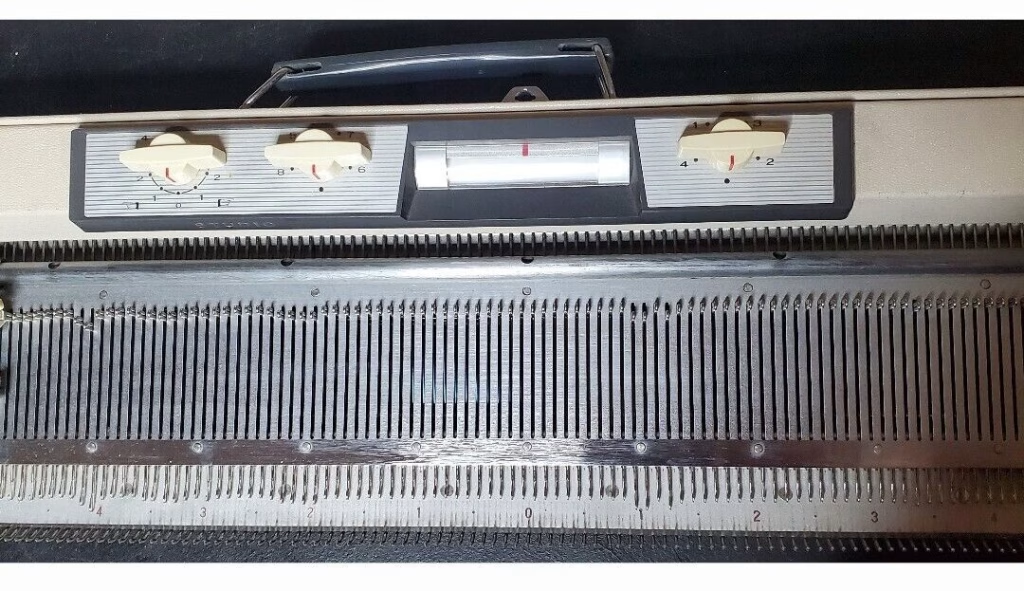
The website with all manuals for various machines has a file with the cards for turn-knob Studio machines.
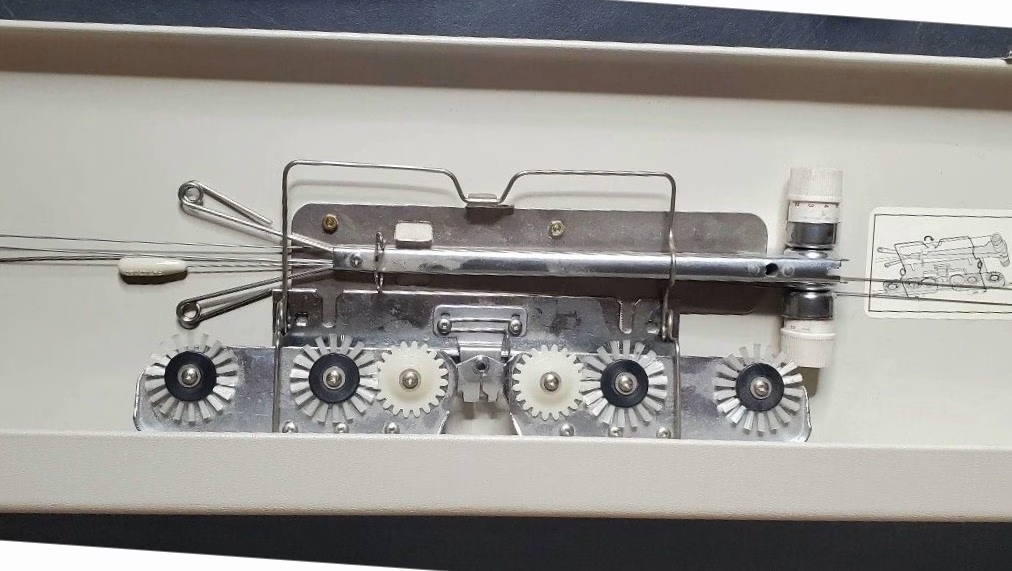
Studio SK-303 still features a vintage (round) row counter that slides into one slot on the needle bed.
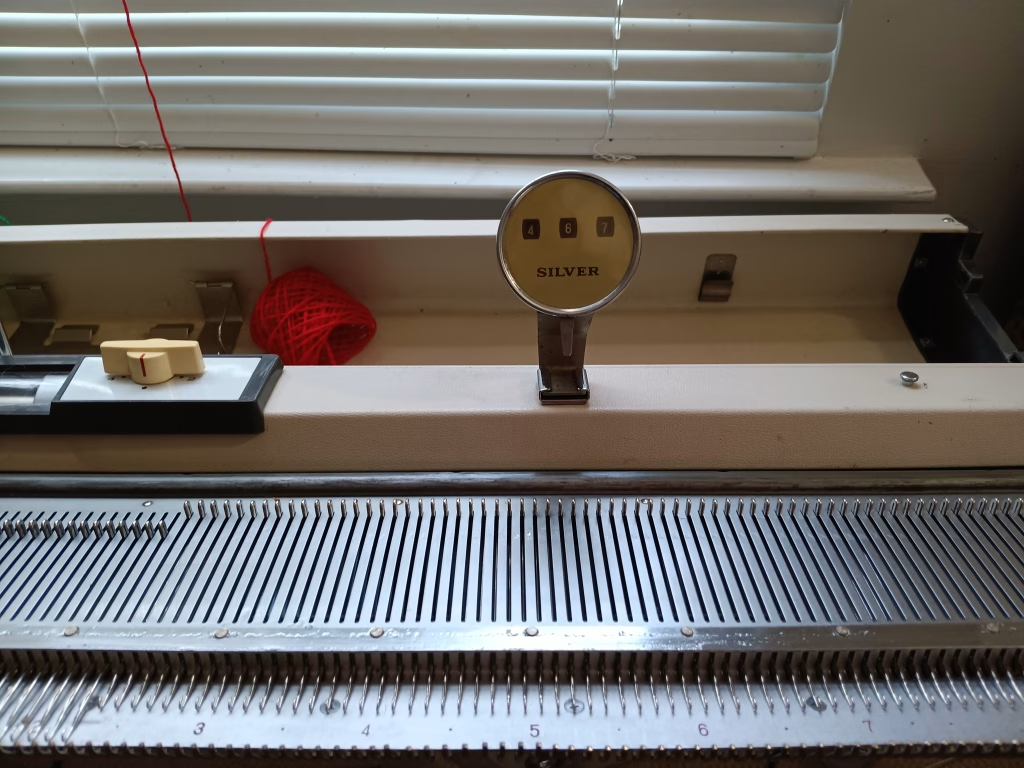
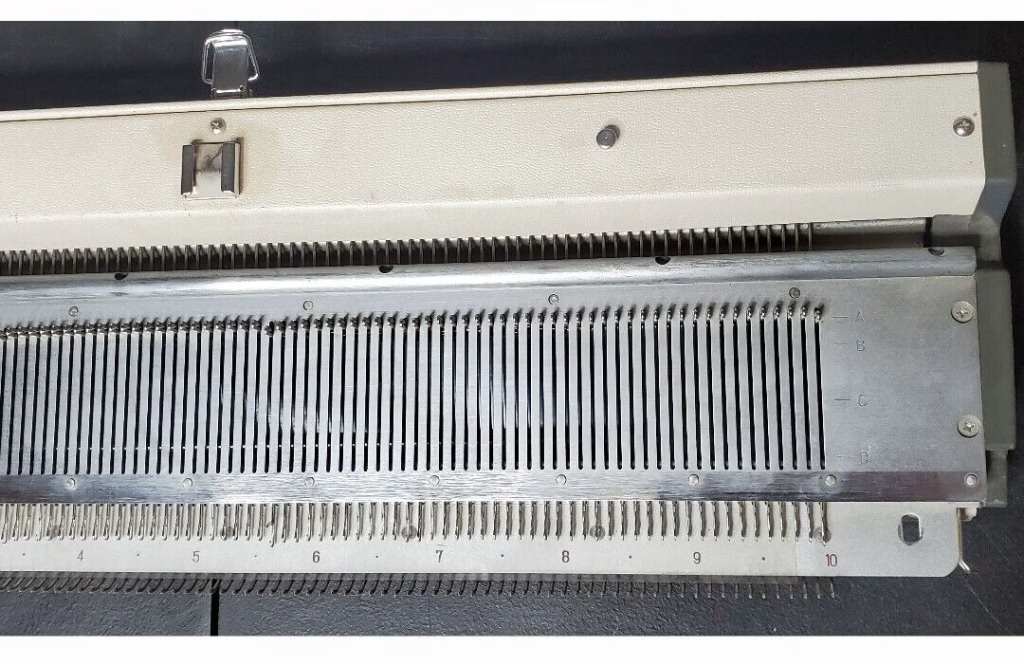
The row counter shown above branded “Silver” but Silver SK303 and Studio SK303 are identical machines and in fact, their names appear on each other packaging interchangibly (as shown below).
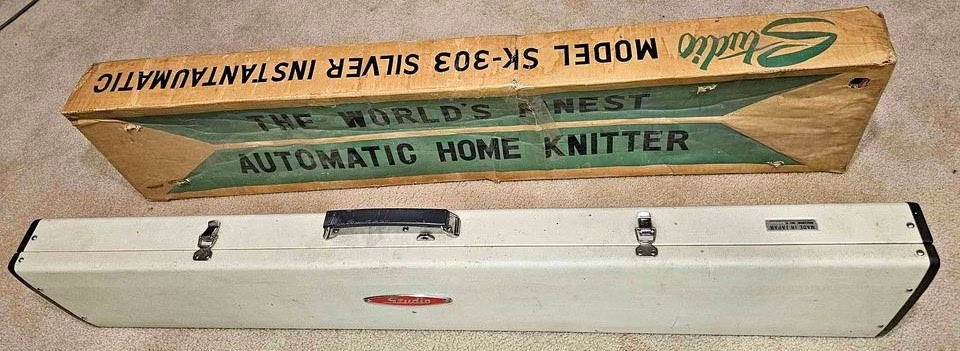
The table clamps are also vintage: S-shaped. They are quite special (th shapes are shown below) but I feel if the machine is used by itself (without a ribber) any S-shaped table clamps should work if your machine came without those.
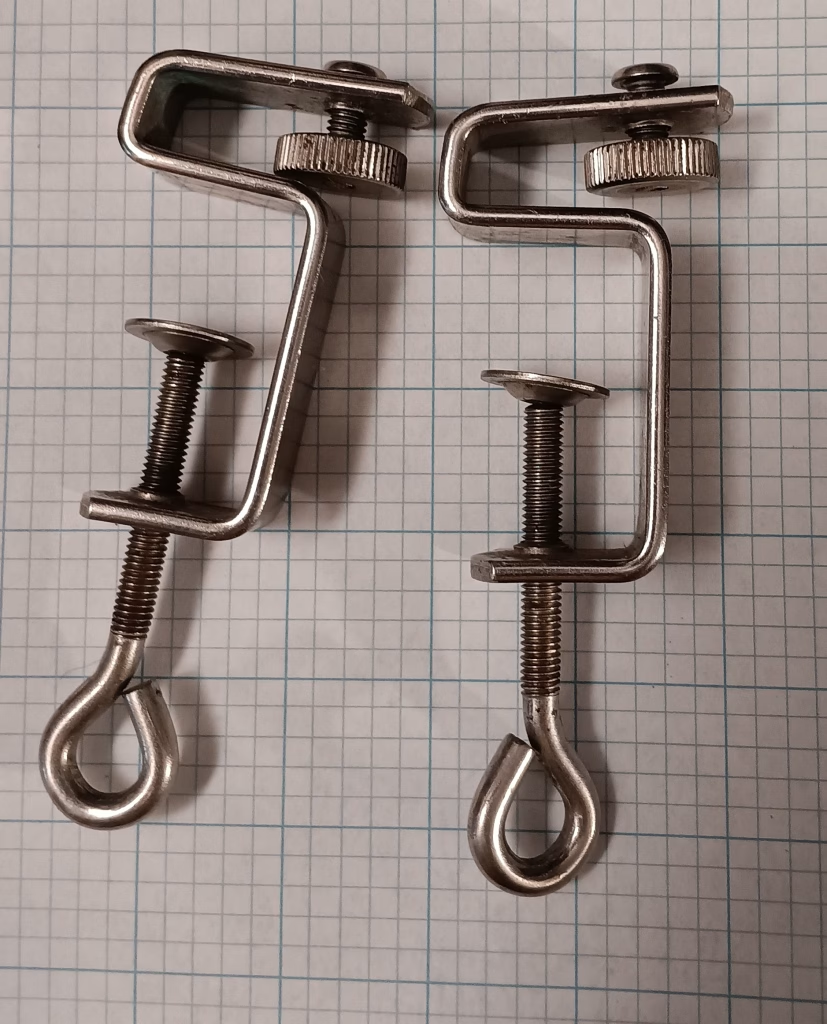
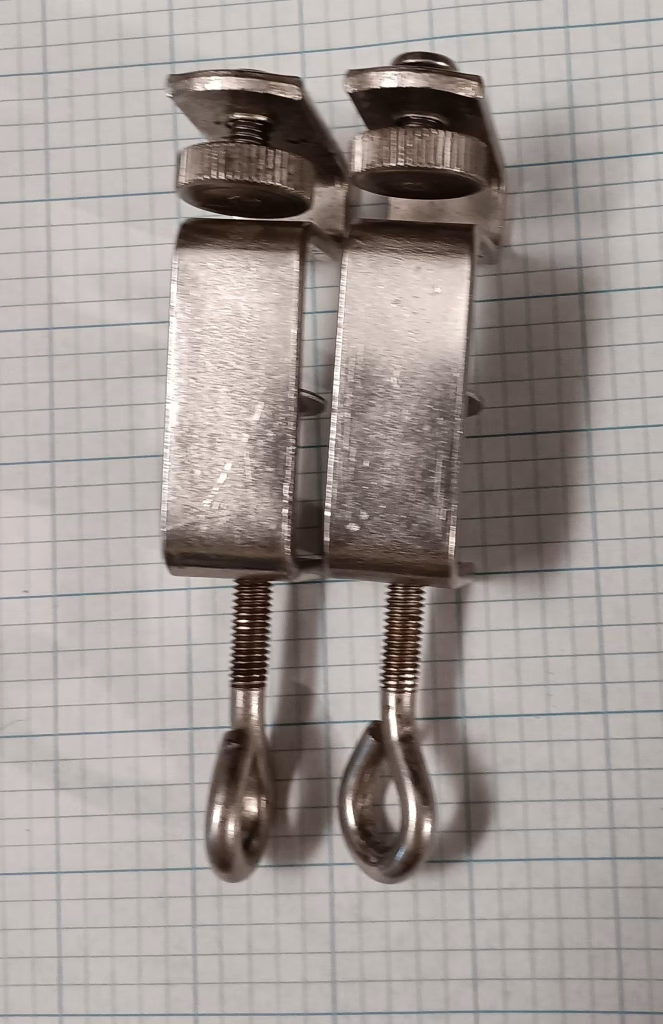
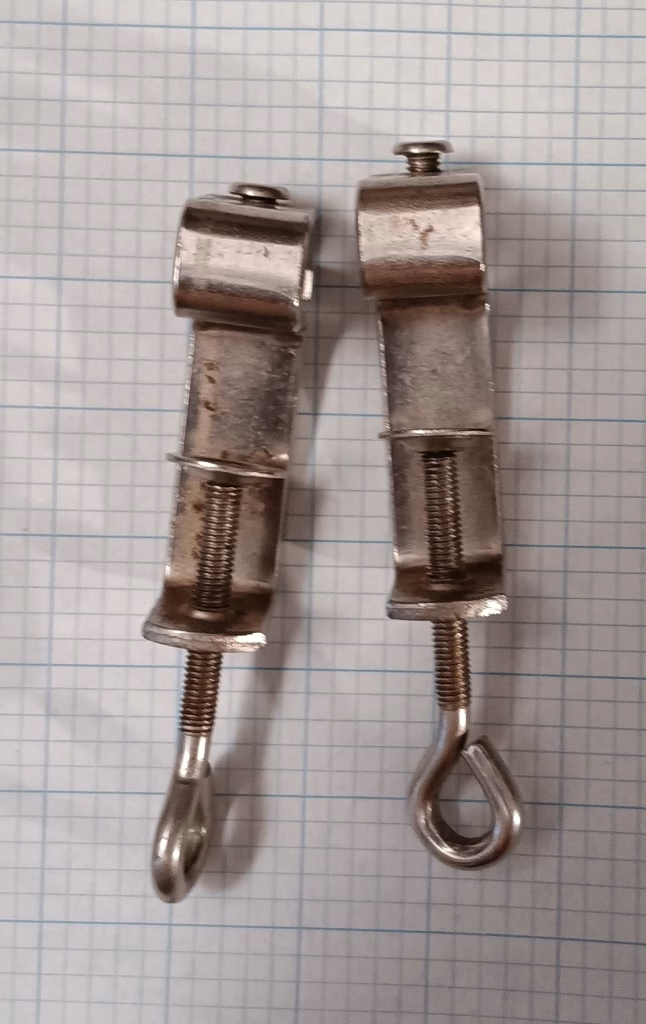
Standard setup comes with a stand-alone toolbox with a lid.
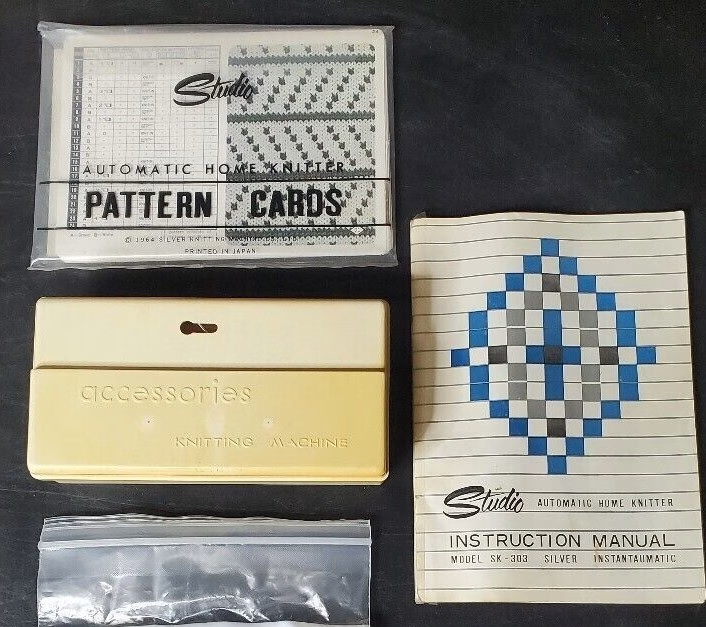
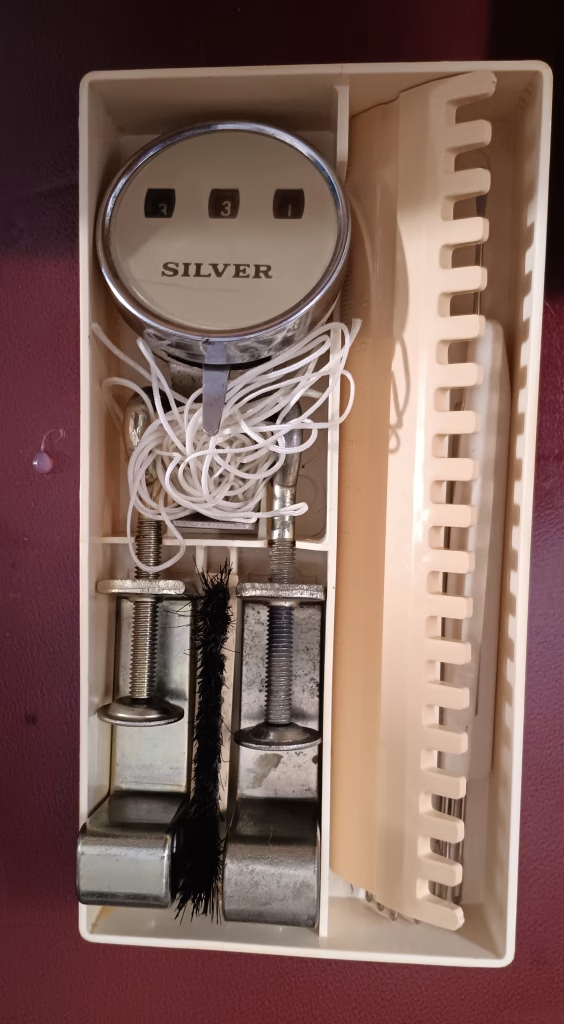
A matching ribber is very likely Studio SR303 or Studio SR305: there are ribbers that are shown next to Studio SK303 machines but without any model/name/markings.
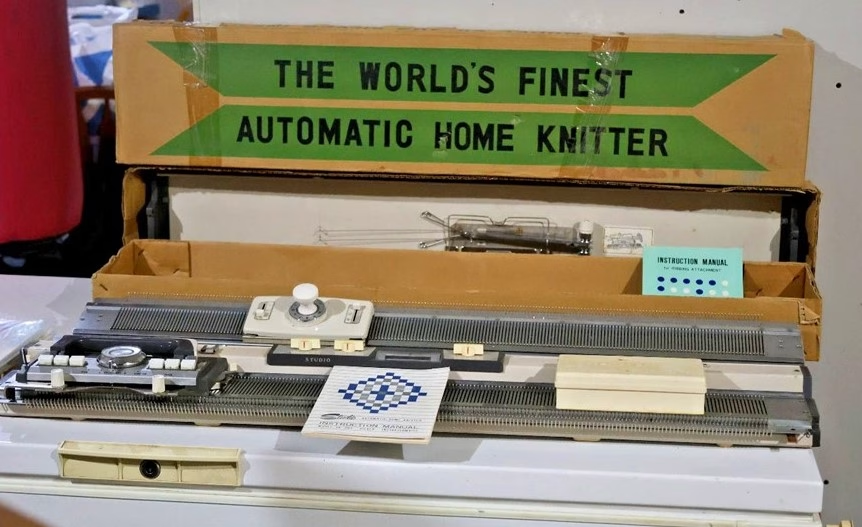
If you are desperate for the information on this machine – check out a very detail article on Singer 888, which is very similar to Studio SK-303 (except for the color). In fact, I compared the manual (available online for free, but is missing some) not critical) pages) for Studio SK303 and a manual for Singer 888, and they are identical.
One difference that I noticed when compared to earlier turn-knob knitting machines (Silver SK-301, Silver SK-302, Singer 666, Studio SK-301, Knitmaster ES-302), Studio SK303 has a two color mast, not a three-color one.Other turn-knob knitting machines are Silver SK-303, Silver SK-305, Knitmaster mod. 305, and Riccar RK-601.
Pros and cons if Studio SK303 knitting machines:
PROS:
- the bed is narrow which makes the machine light-weight and compact
- the machine is all mechanical; thus easy to fix if something breaks or if the machine needs deep cleaning. It is also very easy to remove the machine from its case.
- end end caps are easy to remove from the needlebed and are attached to the main bed by metal hardware
- manual and pattern cards are available online for free
- sturdy end caps
- no patterning drums to get stuck/freeze or yarn to tangle around
- a huge variety of patterng to work with; easy to custom create patterns
- excellent for beginning knitters and for those who transition to machine knitting and not (quite yet) willing to give up the satisfaction of hand-maniulation of stitches.
- 2-color fair isle is relative easy to perform
- no ratchet tool is required to move the needles forward (like in Brother push-button machines)
- it is significantly faster to perform needle selection than manually and than the Brother pushbutton knitting machines (which involves the lever movement every time the needles need to be brought forward)
- ribbers were available to convert Studio SK303 into a double-bed machine
- needle selection pattern versus turn knob combinations is shown on the front panel: no need to constantly refer to the manual
CONS:
- replacement needles might be hard to get. However, the needles are similar in length to the needles for standard Silver/Studio/Silver Reed/Singer ribbers. I am checking soon whether they are indeed compatible.
- figuring out all the knobs and buttons and their combo might be a steep learning curve for some. But once your get a hang of it, it is simpler (less motions involved) to select needles than on machines with pushutton patterning center.
- 2-color fair isle requires manual lay over of the yarn on the needles. It feels a little bit like weaving. But it also eliminates problems with two-thread friction and tangling.
- vintage row counter if mispalced is hard to find
- somewhat limited patterning capabilities: manual needle selection is needed for complex patterns and patterns with more than 8 needle repetition
- colored fair isle requires manual yarn manipulation (the knitted will need to lay the yarn onto the needles with open latches; might seem tedious on larger projects but makes it easy to knit single motif patterns)
- limited number of add-ons: only ribber (no knit leaders, no color changers, no lace carriages, etc).
- replacement parts (row counter, sinker plate) might be hard to find if the machine came without them. Only some parts are interchangible with similar turn-knob models.
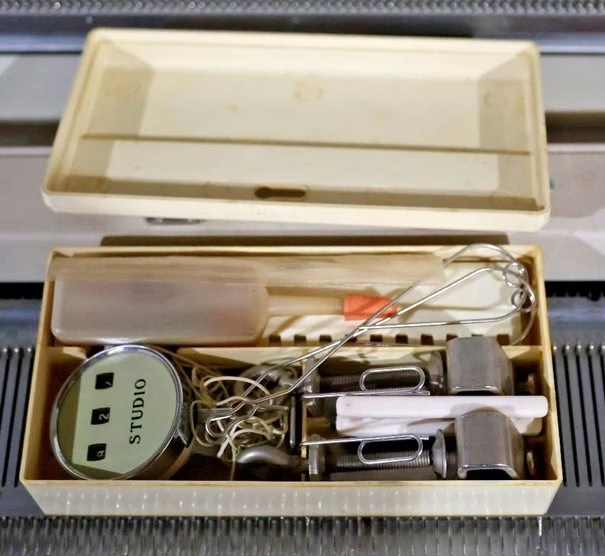
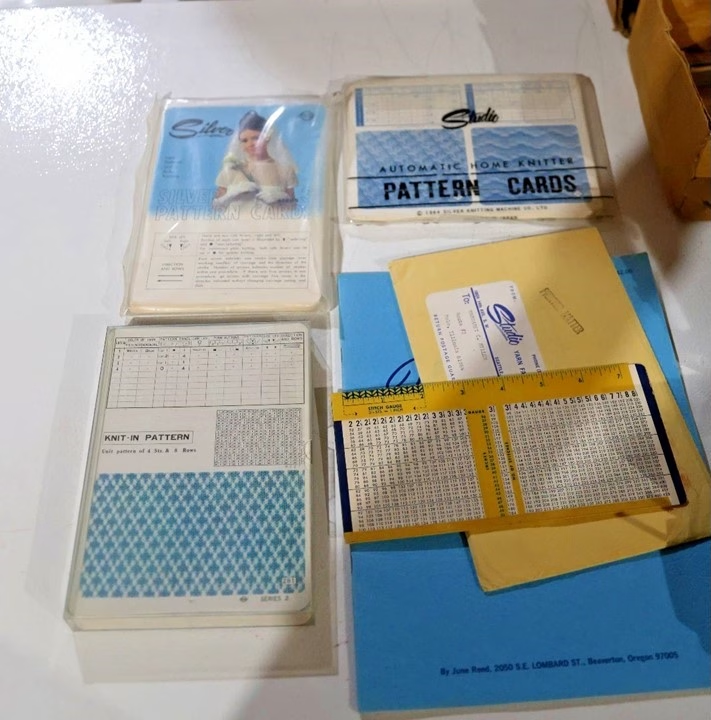
I personally trenedouslby enjoyied working on this machine using variety of yarns. Hope you too!!
